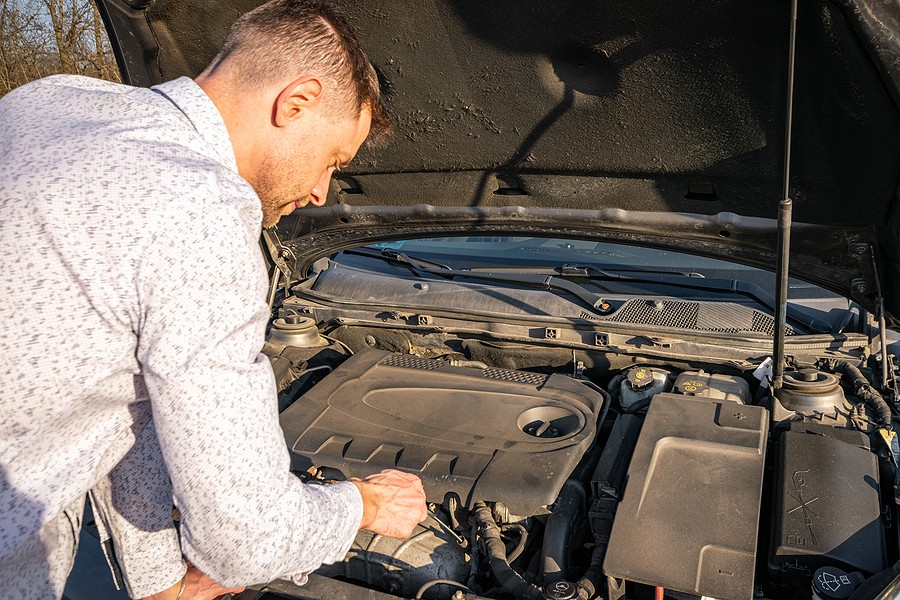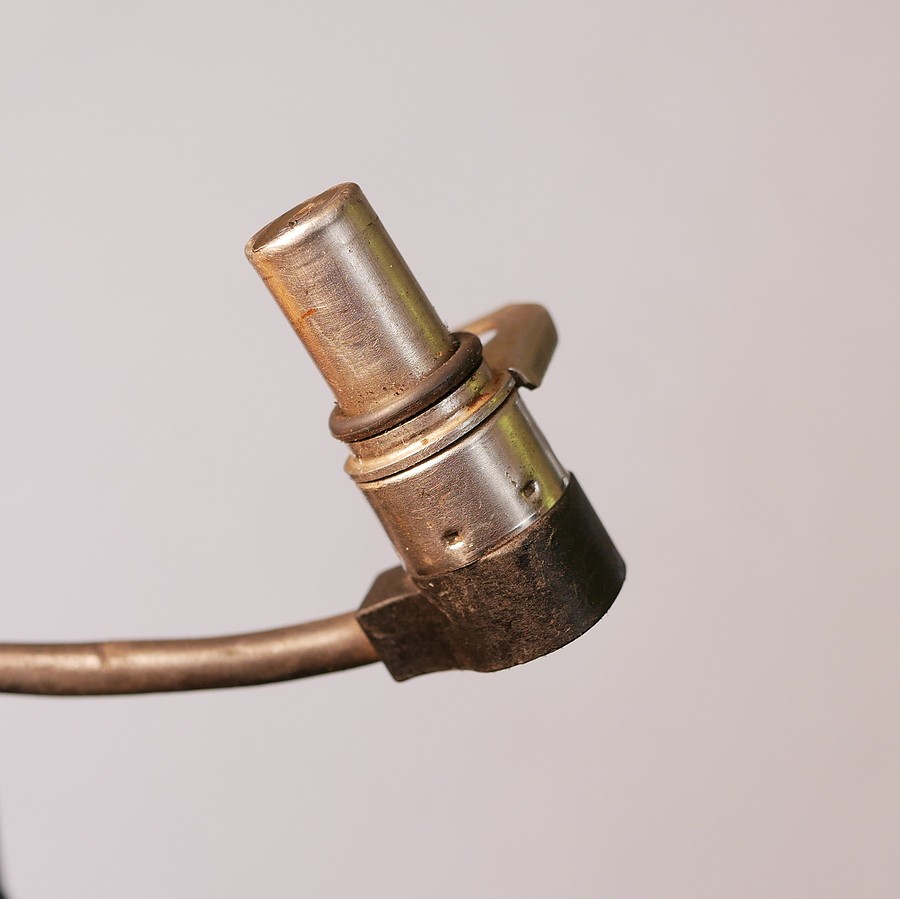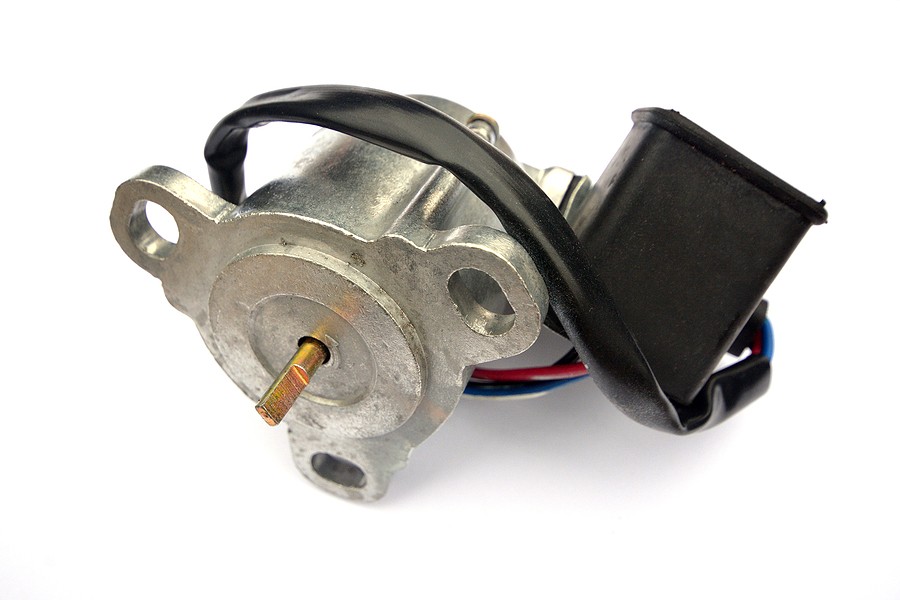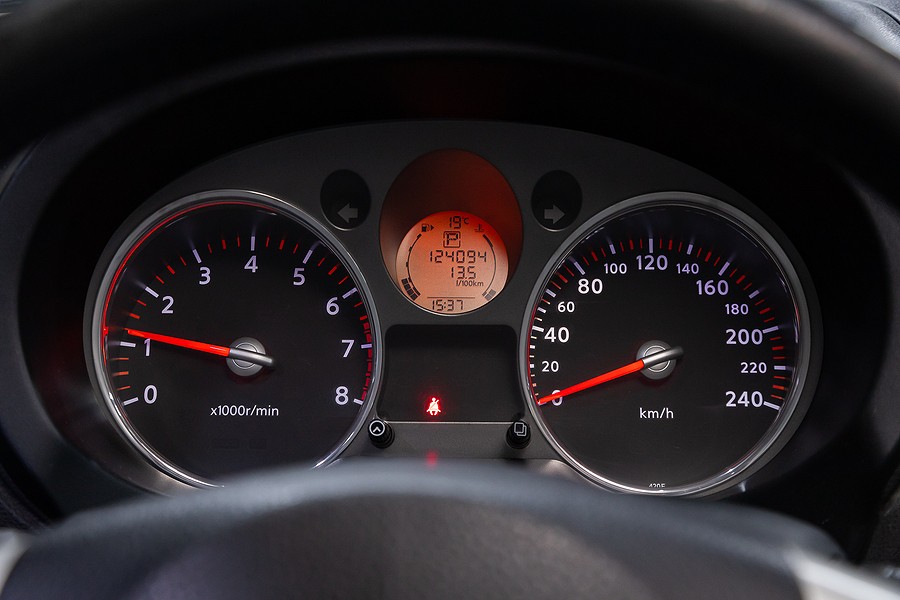Car speed sensors are part of the electronic control unit. They monitor the rotational speed of a rotating or rolling object, such as a wheel or engine. It's mounted on the outside of the car and detects changes in rotation, bypassing magnetic fields through a sensor to an internal circuit board.
The purpose is to measure vehicle speed, which it relays to the engine control unit. Depending on how many speeds your vehicle can change gears, it may have multiple speed sensors. If one fails, the engine control unit will continue to use data from other operational sensors instead of failing.
How do you know if your car's speed sensor is faulty?
Before you go through the trouble of checking for any issues with your speed sensor, you should first understand what normally causes a faulty speed sensor.
Normally, your car's speed sensors are fairly durable. The most common reason for these parts to fail is normal wear and tear or exposure to harsh weather conditions. However, there are other symptoms of a bad speed sensor, including:
- Erratic readings of your RPMs.
- Unusual sounds come from the car's engine, such as a rattling noise.
- Car refusing to change gears.
How to check on your car's speed sensors?
Before you move into repairs, you'll need to confirm that the symptoms you noticed are related to a bad speed sensor. Therefore, you'll need to follow these steps to check on your car's speed sensor:
- Drive your car, and allow it to reach normal operating temperature (the engine should be warm to the touch).
- Find a flat, straight road with little traffic. Make sure there's ample room for you to pull over safely.
- Try shifting into different gears; if your vehicle refuses to change or it changes too early or late, a faulty speed sensor could cause that.

How to Fix Your Car's Speed Sensors?
Since your car's speed sensors are fairly easy to fix, you should look into changing it yourself before taking it to a mechanic. However, there are times when the issue is too much for you to handle, and you should consider hiring a professional instead.
If you're planning to fix your speed sensor, you'll need to follow the right procedure. Here's a detailed step by step process on how to fix a broken speed sensor:
Step #1 – Get the right tools
You'll need to have some basic tools with you to complete this job successfully. Here's what you will need:
Socket wrench Torque wrench An Allen key Flashlight A flathead screwdriver
Step #2 – Locate your faulty speed sensor
Finding your faulty speed sensor shouldn't be too much of a hassle. There are three types of speed sensors, depending on where it's mounted:
Front sensor – installed in the front or back axle. Rear sensor – located near the rear wheel or at the transmission. Transaxle sensor – found inside the car's transaxle housing unit.
Step #3 – Remove your faulty speed sensor
- Removing the front speed sensor
If you're looking to replace your front speed sensor, you can do so by following these steps: Make sure that your battery is disconnected before starting this process. Next, use a socket wrench to loosen and remove your car's negative cable from its terminal post. After removing your negative cable, use an Allen key to unscrew your negative cable to hold down other cables under the terminal.
- Remove your car's ABS sensor if there are any.
If the sensors are held tight by bolts, remove them completely with a socket wrench. Once you've unbolted all parts of the speed sensor, you should be able to wiggle it out from its place by pulling firmly at it.
- Removing your rear speed sensor
Removing your speed sensor is best done on a flat surface away from other cars or people that could get hurt if something falls or slips off while working on this part. You'll need to follow these steps: Find and remove the screws holding the cover plate using either a screwdriver or an Allen key. Next, pull out the individual wiring attached to your faulty speed sensor carefully to not damage to your car's wiring. Unclip the wires from the sensor while pulling it out gently.
- Removing your transaxle speed sensor
Your faulty speed sensor may be located inside a housing unit known as a “transaxle.” To replace this part, you'll need to follow these steps: Make sure that your battery is disconnected before starting this process. Next, remove all other electrical parts wired on top of your defective speed sensor so you can easily access it later.
Use an Allen key to remove bolts holding down the housing cover before removing them completely with a socket wrench or screwdriver. Next, pry open the housing cover, being careful not to damage it in any way since they are relatively cheap and easy to find. Finally, remove the faulty speed sensor and replace it with a new one.
Step #4 – Install your new speed sensor
You can now install your new replacement part after locating and removing the old faulty speed sensor. However, you should take care not to over-tighten your screws and bolts, as doing so may damage or cause unnecessary tension on other parts that might be connected later on. In addition, it would be best to remember which wire goes where when installing each part of the wiring system for an easier installation process later on.
After completing this process, you're now ready to reconnect your car's battery if it was disconnected earlier in this step. If everything seems to be working fine after testing it out yourself or having someone test drive your car for you, then congratulations! You've just successfully replaced your car's speed sensors.

How much does it cost to replace a speed sensor?
It usually costs around $280 to get your speed sensors replaced. However, it's encouraged that you confirm the cost of replacement before undertaking this project yourself or hiring someone else to do it for you. You can also call your car's manufacturer if you're not sure about replacing any part of your car on your own.
Replacing a faulty front speed sensor is best done by mechanics since they will likely be familiar with the layout and design of your make and model of car. Replacing a rear or transaxle sensor may cause damage to other parts in these areas, so we don't advise self-repair for this particular type of speed sensor replacement.
However, there are many advantages to doing this kind of repair work yourself, such as saving money, gaining knowledge about your car's parts, and learning first-hand how to replace faulty parts should the need arise again in the future.
Tips for keeping your car's speed sensors in good condition?
As you might notice, dealing with a faulty speed sensor is never a fun situation. Therefore, drivers should familiarize themselves with some tips and tricks to extend the lifetime of the speed sensor and keep it in good condition.
Here are some simple things to remember to avoid any problems with your speed sensors:
- Keep your tires in good condition and always at the recommended pressure. This helps you get more out of the fuel by not working against tire resistance.
- Avoid driving on the same area of the road over and over again; this will help you avoid putting too much stress on any part of your car, including the speed sensors.
- Make sure not to drive on water and avoid filling up right next to a storm drain or body of water.
- Ensure that your car is always kept clean; mud and debris can get in the speed sensors, so it's important to clean your car from time to time.

How to Fix Your Car's Speed Sensors? FAQs
This section contains some of the most frequently asked questions about car speed sensors.
What happens when a vehicle speed sensor goes bad?
When your vehicle's speed sensors go bad, it can cause various problems. Usually, this manifests itself installing or not starting at all. However, other potential problems might occur with having faulty or damaged speed sensors, which include:
You have to deal with sub-standard engine performance because of preventing your car from getting the messages from the speed sensors about how fast your car is moving. You may also have to deal with deteriorated or sub-standard fuel mileage because of this issue if you've been experiencing it for a long time now.
How do I reset my speed sensor?
Some speed sensors have a reset button that you can push to erase any trouble codes from your car's computer. In some cases, this will fix the problem with your speed sensors and allow your vehicle to run normally again until you replace them or fix whatever is causing the faulty readings from those speed sensors.
Can I drive my car with the speed sensor failing?
Yes, you can still drive your car with a malfunctioning or failing speed sensor. However, if the problem is severe and gets worse over time, eventually, driving your vehicle might not be safe, especially if it's stalling more often. If this is the case, we would advise having the speed sensors replaced right away before anything bad happens, such as causing a car accident.
How often should I replace my car's speed sensors?
It depends on what speed sensors your vehicle has. If you only have one set of speed sensors in the front, then the chances are that they should be replaced every 100,000 miles or so. Rear speed sensors are usually more durable and can last longer. However, they will also need to be replaced eventually.
Where is the speed sensor located?
In some cars, the speed sensors are located on the transmission. But, in most cases, it is under your vehicle's dashboard and near the accelerator pedal or brake pedal.
How long does it take to replace a speed sensor?
It usually takes about 2 hours to replace a speed sensor. However, this time frame might vary depending on the age and model of your car, so it's best to check with an expert to get more accurate times for your specific vehicle.
Can you clean a speed sensor?
Yes, you can clean a speed sensor. If the problem is just dirt or debris, this might fix your problem with the speed sensors. However, if the problem results from a more severe issue, you'd have to replace the speed sensors without cleaning them.
How many speed sensors do cars have?
Most vehicles will have a one-speed sensor up front and one on the back axle. A few others might have a third-speed sensor located on the transmission.
Can car speed sensors cause tire pressure problems?
Having faulty or damaged speed sensors can impact the accuracy of your tire pressure monitoring system. This can cause your low tire pressure warning to come on even when you're not having any problems with your tires.
Can car speed sensors cause dashboard warning lights to come on?
Yes, faulty speed sensors can cause your car's dashboard warning lights to come on. Since the speed sensors are an important part of your vehicle's computers, they are the ones that receive information about how fast you're driving. Therefore, if there is some problem with these sensors or a problem with your car's speedometer, then it can cause a variety of dashboard warning lights to come on.
Conclusion
The speed sensors are responsible for your car's computer messages about how fast it is moving. If you have any issues with these, the dashboard warning lights will come on, and safety may be compromised. This article provided you with detailed information on how to fix your car's speed sensor.
If you found the process challenging, it's recommended that you leave it to professionals to avoid causing more damage or compromising the accuracy. It would be helpful to have someone support you when attempting to replace your speed sensors to ensure that everything goes smoothly.



